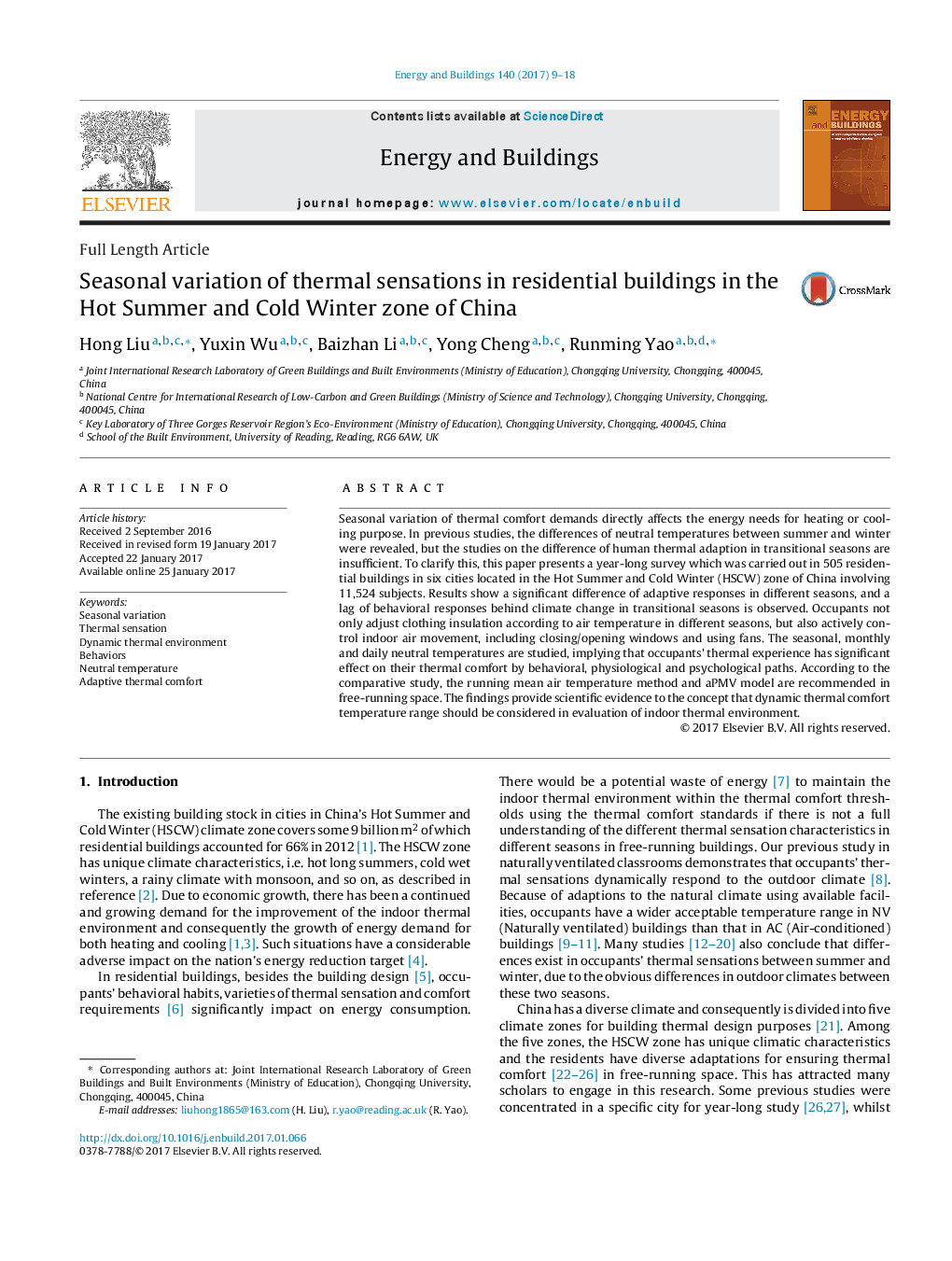ترجمه فارسی عنوان مقاله
تنوع فصلی حس گرما در ساختمان های مسکونی در منطقه گرم تابستان و سرد زمستان چین
عنوان انگلیسی
Seasonal variation of thermal sensations in residential buildings in the Hot Summer and Cold Winter zone of China
| کد مقاله | سال انتشار | تعداد صفحات مقاله انگلیسی |
|---|---|---|
| 143907 | 2017 | 10 صفحه PDF |
منبع

Publisher : Elsevier - Science Direct (الزویر - ساینس دایرکت)
Journal : Energy and Buildings, Volume 140, 1 April 2017, Pages 9-18
ترجمه کلمات کلیدی
تنوع فصلی، احساس گرمایی محیط حرارتی پویا، رفتار، دمای مطلوب، راحتی حرارتی سازگار،
کلمات کلیدی انگلیسی
Seasonal variation; Thermal sensation; Dynamic thermal environment; Behaviors; Neutral temperature; Adaptive thermal comfort;

